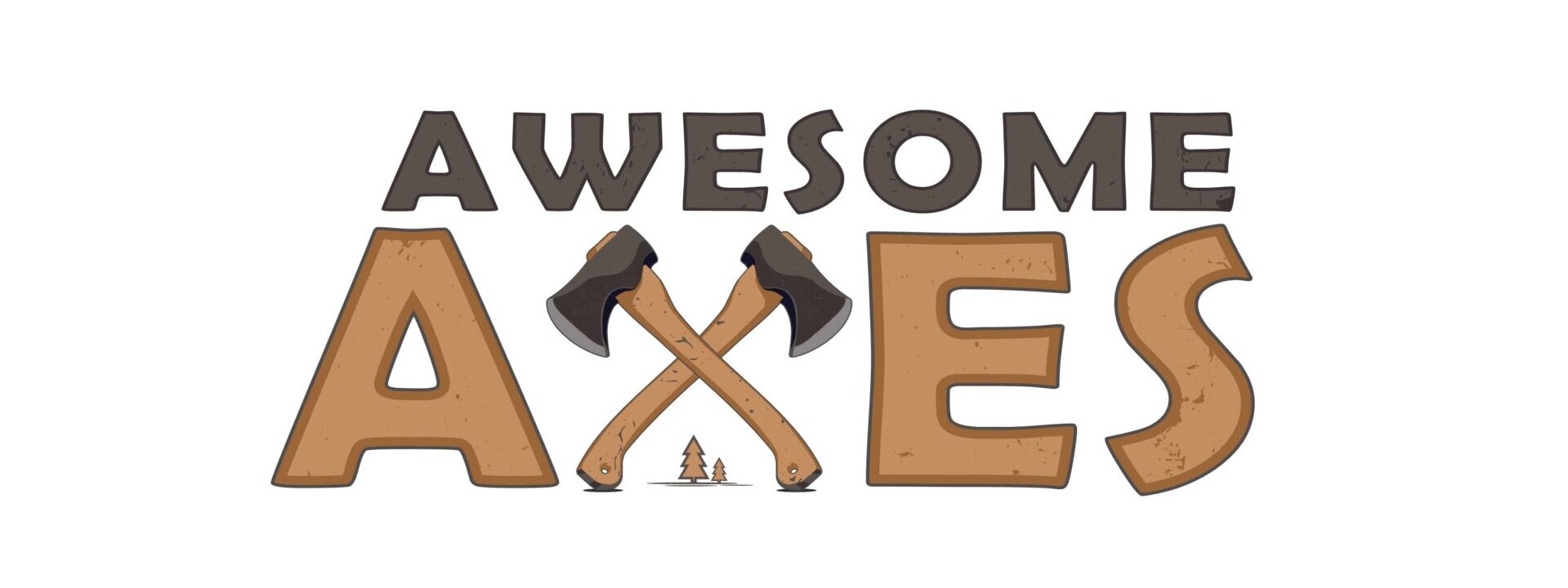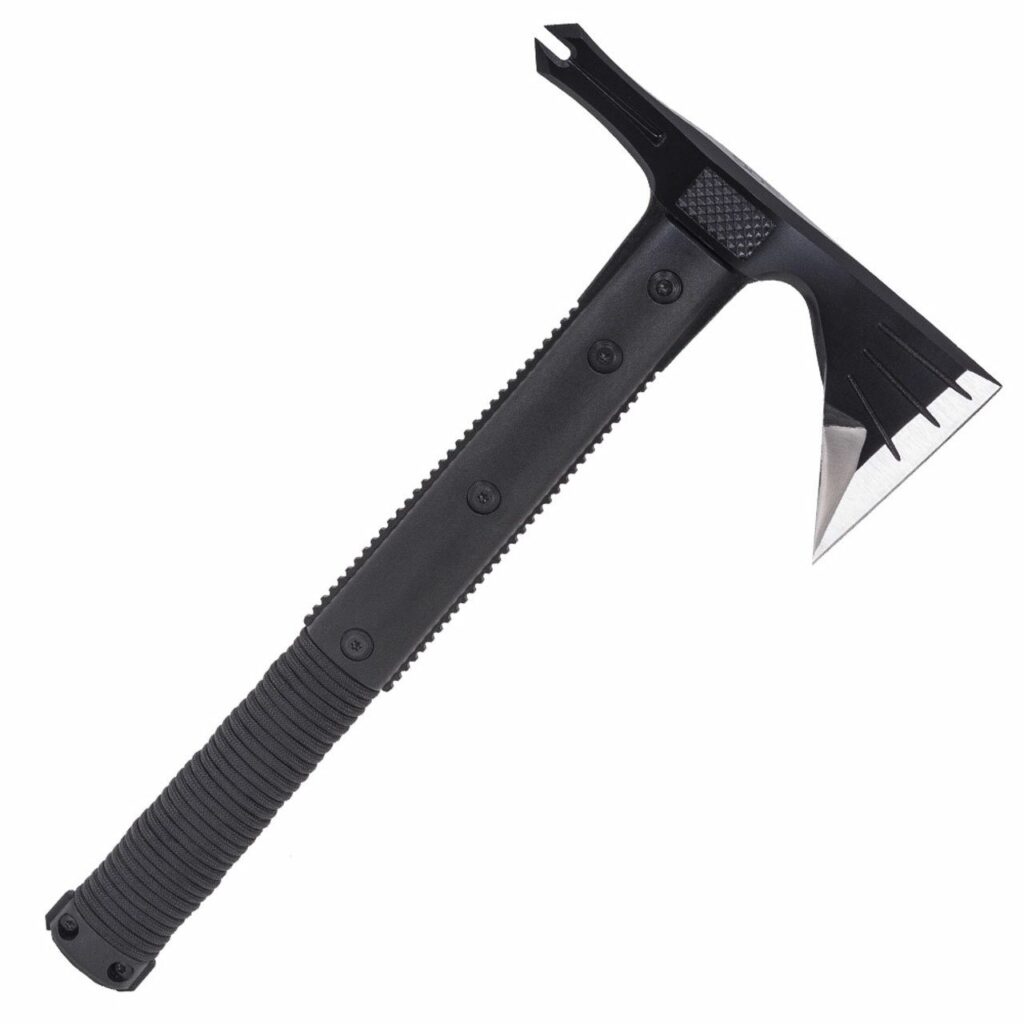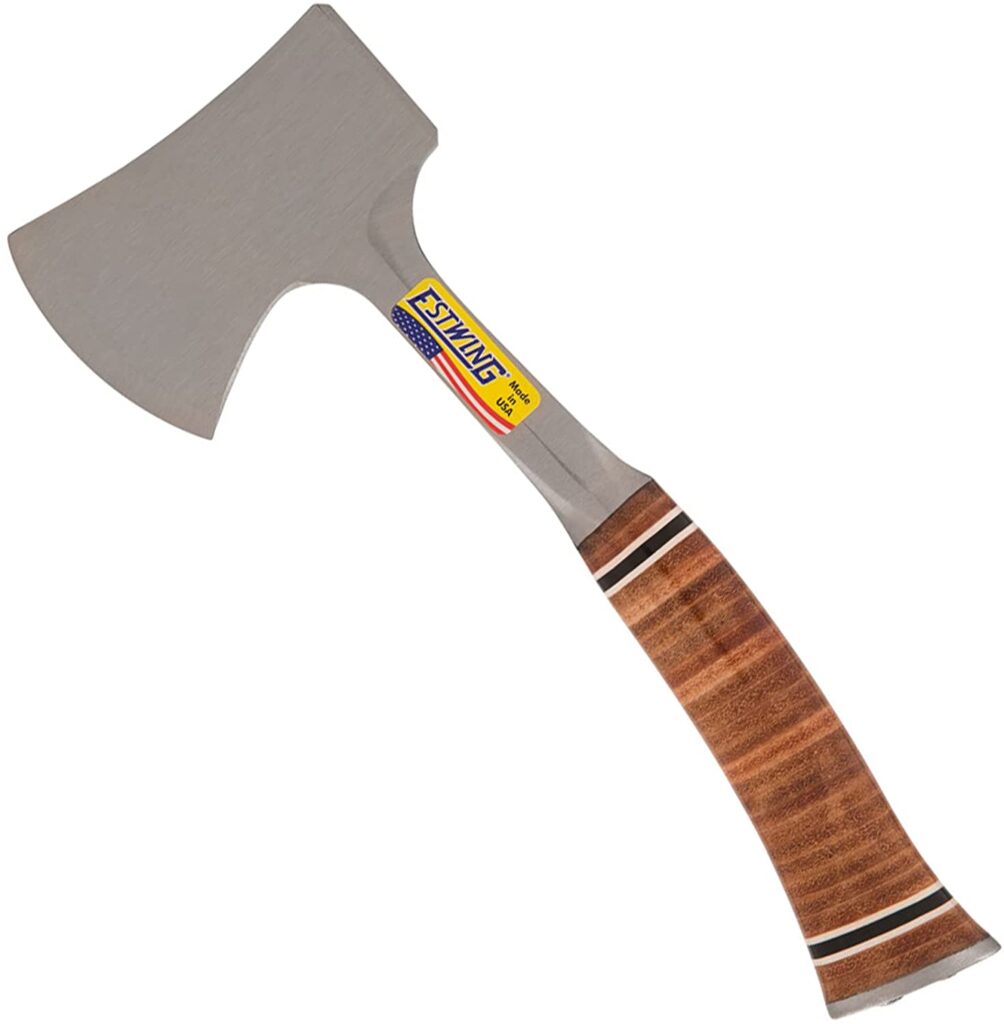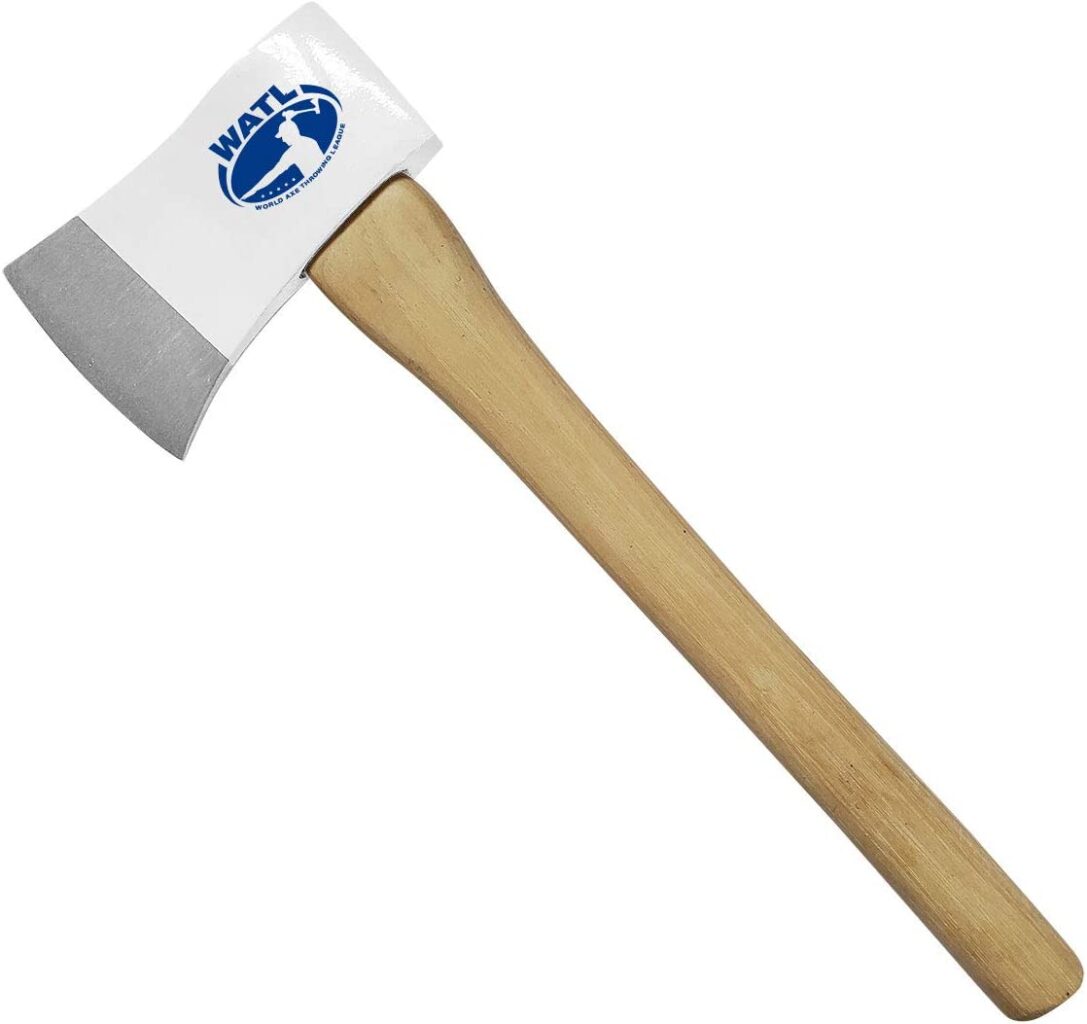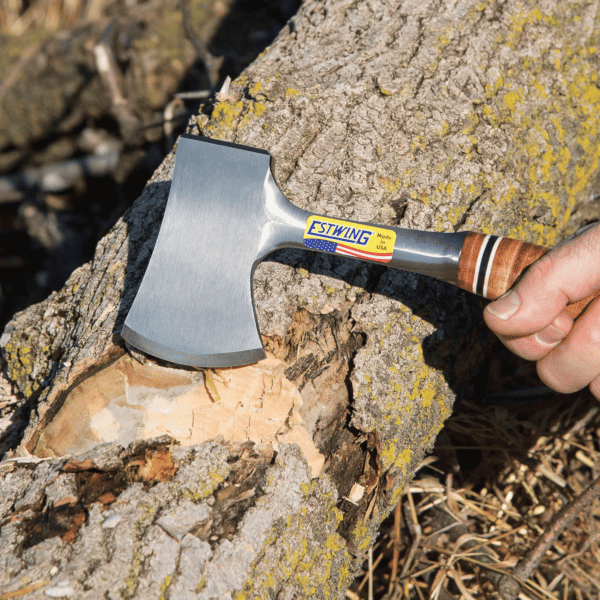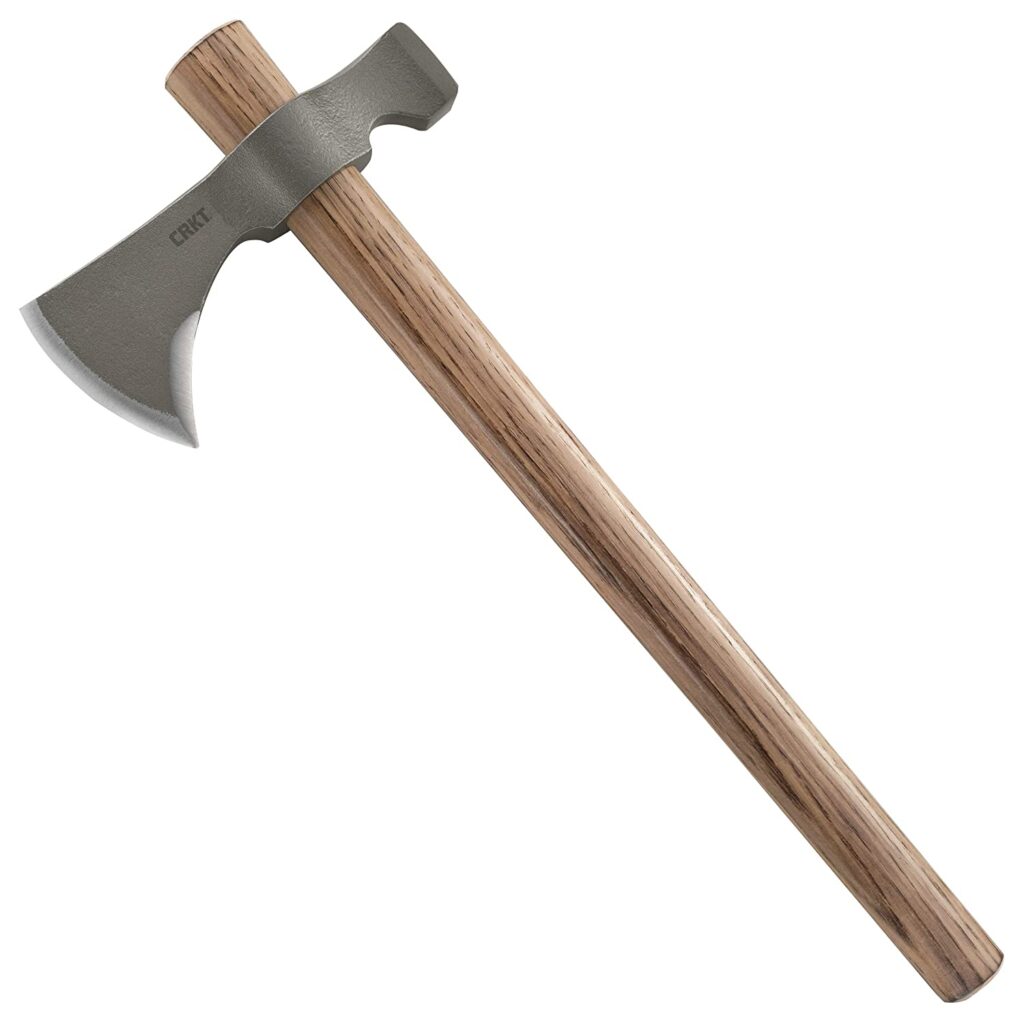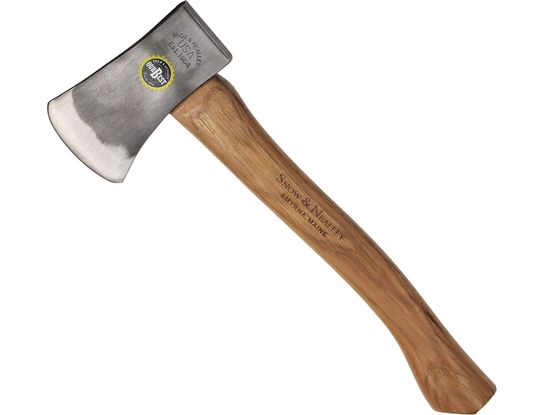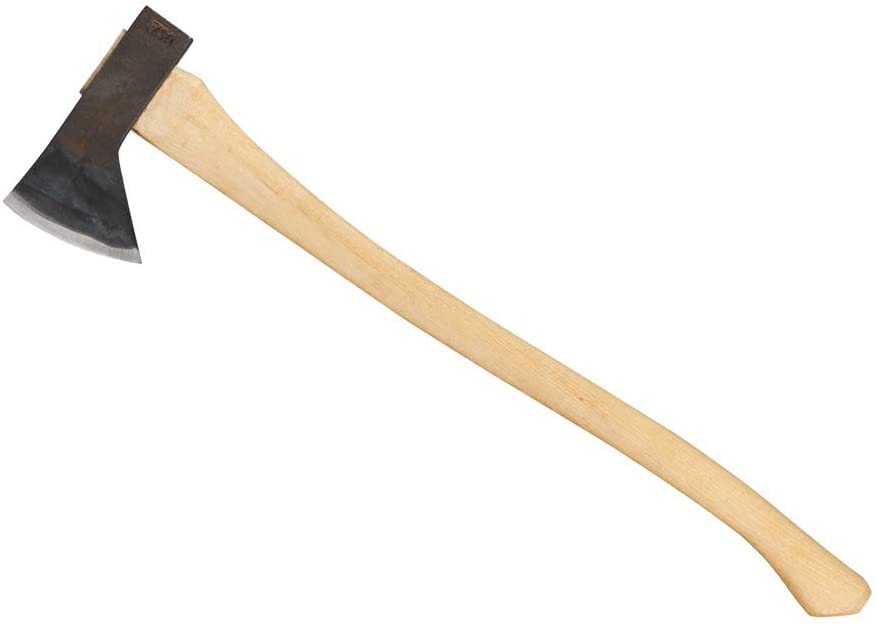The World Axe Throwing League Competition Thrower is my top choice because it has a thin profile and sharp blade. It features a 16-inch American hickory handle that can be cut to any length. It is ideal for beginners to official axe throwing competitions.
Axe throwing is growing in popularity every year. From casual nights out with friends to serious axe-throwing events where people compete according to official rules and regulations, axe throwing has something appealing for all levels of throwers – from absolute beginners to hardcore enthusiasts. Just as important as enthusiasm, though, is also the axe you will be throwing. Cheap axes dull and chip easily, are hard to throw, and take some of the joy out of throwing them.
This is an in-depth buyer’s guide to the best throwing axes and includes reviews of the top throwing axes, in my opinion, that you can get (balancing price and performance).
The axes are reviewed according to the official regulations of the two main axe-throwing organizations, the NATF (National Axe Throwing Federation) and the WATF (World Axe Throwing Federation). You should keep these in mind if you’re looking for an axe to train for and take part in competitions with, but the axes listed are fine choices if you want to toss them for fun by yourself or with friends simply.
- Total Weight - 37.6 ounces
- Cutting Edge - 3.5 inch
- Total Length - 16 inch
- Thin Profile to Stick in Targets
- Total Weight - 19.5 ounces
- Cutting Edge - 3.0 inch
- Total Length - 12.1 inch
- Glass Re-inforced Nylon Handle
- Total Weight - 20.8 ounce
- Cutting Edge - 3.2 inch
- Total Length - 16 inch
- Full Tang - Single Piece of Steel
So without further ado, let’s get into it – read on to find out the best throwing axes for any situation.
Table of Contents
1. World Axe Throwing League Competition Thrower
The World Axe Throwing League makes the best overall throwing axe. It is specifically designed for axe throwing competitions, which is evident in its thin profile and sharp blade, making it much more likely to stick into the wooden target. It has a 16-inch American hickory handle that is extremely well-balanced. The handle is longer than most, but that is because it is designed to be cut down to adjust based on your height and throwing style.
I recommend going with this WATL Competition Thrower if you are a beginner at axe throwing so that you can practice with the exact axe you will be using when you start competing.
Pros
- Designed by the official body for the sole purpose of axe throwing
- Well-balanced American hickory handle
Cons
- You can cut the handle to better suit your throwing style, but make sure you don’t cut off too much and completely ruin it
2. SOG Survival Tomahawk
The SOG Survival Tomahawk is a great choice if you want a light, yet very durable throwing axe. The great thing about it is that the axehead is full tang – which means that the axehead and core of the handle are forged in one piece. That, along with the high quality used to make them, makes these throwing tomahawks indestructible. An excellent lightweight throwing axe for beginners, but really for all axe throwing enthusiasts.
I suggest this tomahawk for people who will be axe throwing outdoors and need a durable tool.
Pros
- Full tang design
- Excellent for beginners to axe throwing
- Lightweight and durable construction
Cons
- There are a few other SOG options that are also suitable, like the Fasthawk, that you might want to consider
3. Estwing Sportsman’s Axe
The Estwing Sportsman’s axe is another indestructible throwing axe made of a single piece of steel, with a sanded and lacquered leather grip. It’s smaller and heavier than the SOG Survival Tomahawk, which is fine if you prefer something with a little more heft (as many strong axe throwers do – tomahawks can feel too light in the hand for many).
The Estwing is my recommendation for stronger axe throwers who feel that lightweight throwing axes are too small.
Pros
- Made from a single piece of steel
- Lacquered leather grip
Cons
- Heavier than the other options won’t be ideal if you have a smaller frame
4. CRKT Chogan Tomahawk
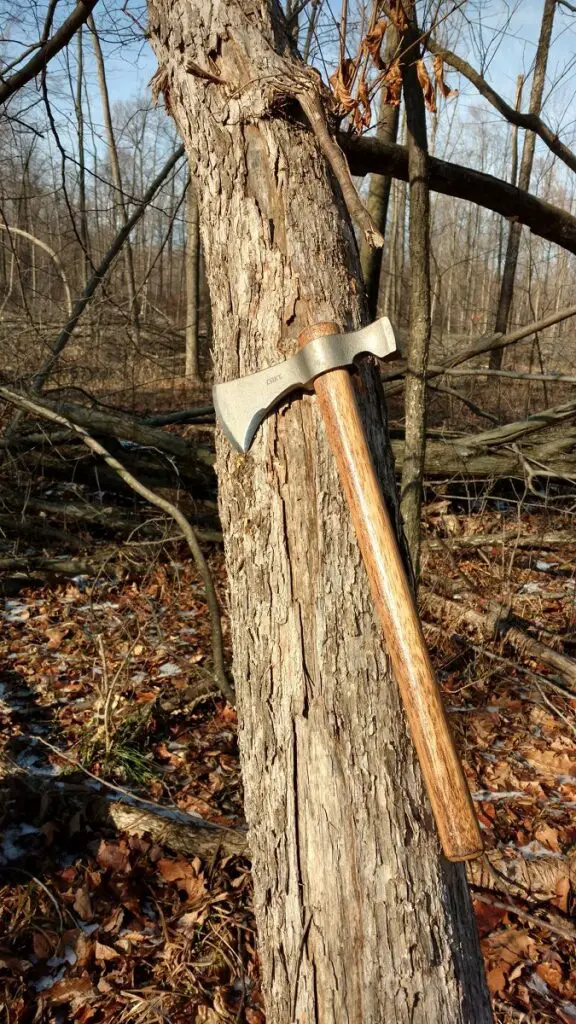
Fourth on my list is this Tomahawk design by CRKT. It has a forged 1055 carbon steel head and a dense Tennessee hickory handle. One key feature I love is the lifetime warranty that shows how much faith the manufacturers have in the quality.
This is a versatile throwing tomahawk that you can also use for splitting wood or the back for hammering in tent pegs.
The head is also removable so you can transport and store it more easily.
Pros
- 1055 carbon steel
- Tennessee hickory handle
- Lifetime warranty
- Specifically designed as a throwing tomahawk
Cons
- I am always skeptical of axeheads that aren’t securely wedged onto the handle
5. Husqvarna 13-inch Wooden Hatchet
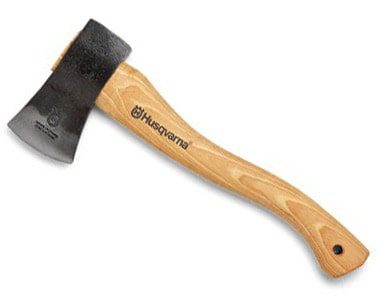
The Husqvarna 13-inch wooden throwing hatchet is a fine axe with a 1.2 pound axehead. A smaller handle feels heftier in the grip, which many axe throwers prefer. The well-regarded Husqvarna tools company makes it, but the axes are actually manufactured by their parent company, Hultafors – the same group that makes the amazing Hults Bruk line of axes.
The Husqvarna hatchet is much more affordable, with good construction and attention to detail.
It’s a good choice for a small axe for throwing in NATF events, and, of course, it’s great for small tasks outdoors as well.
Pros
- Swedish hand forged axe head
- Comfortable curved handle
Cons
- More affordable price tag
6. Snow and Neally Outdoorsman’s Belt Axe
This is a light, sturdy 15-inch outdoorsman’s axe with a 1 ¼ lb. axe head. Snow and Neally are known for the reliable axes from their Smyrna, Maine factory, axe heads made of high-quality American steel.
The Outdoorsman’s Belt axe’s handle is long enough to get a good heft and swing, allowing for a more powerful throw, but light enough that it’s easy to control and handle. It has a fine leather cover for the whole axehead (not just the blade!)
The Snow and Neally is a premium axe made from quality materials, but it does come at a higher cost.
Pros
- Made in America
- High quality American steel
- Fine leather axehead cover
Cons
- Higher end of the price range
7. Council Tool Hudson Bay Axe
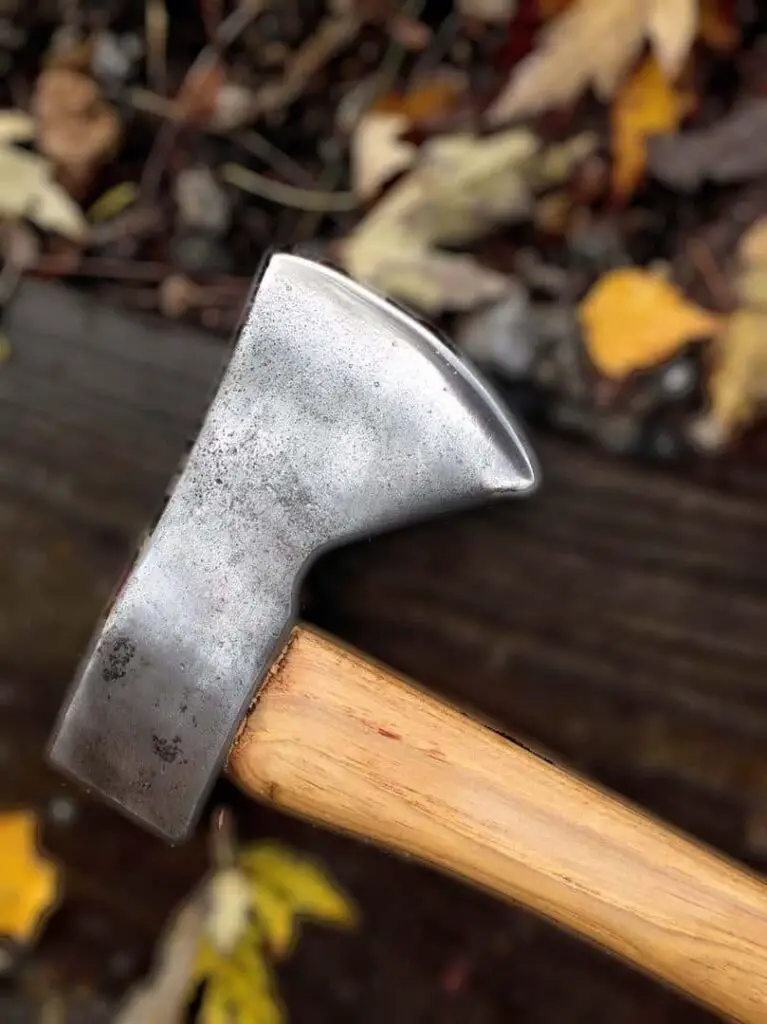
Did you think axe throwing was limited to hatchets and small axes? Not a chance – people also love throwing big felling axes, and the big federations have regulations for those, too. As with the smaller axe category, the NATF are more strict than the WATF regs – the handle has to be made of wood, for example.
Going by these standards, I can immediately recommend the Council Tool 28-inch Hudson Bay camp axe.
The main features are in the handle length – a two-inch difference – and the axehead shape, with the Council Tool Hudson Bay axe has a pronounced beard. The Council Tool is an American-made tool, and I’d say you get what you pay for in this situation – the Council Tool is nicer, pricier too, but it’ll hold up to all the throwing you want to do with it (tree felling, too).
I recommend this axe as the clear winner in the large axe throwing category.
Pros
- The pronounced beard gives more surface area to stick into the target
Cons
- Much more difficult to throw for beginners than a smaller length axe
Official Competition Throwing Axe Regulations
The world of competitive axe throwing is made up of two organizations – the National Axe Throwing Federation or NATF, and the World Axe Throwing Federation or the WATF. They have different regulations about what kind of axes can be used at their axe throwing events. First off, the NATF:
NATF Throwing Axe Requirements
Venues and events associated with the National Axe Throwing Federation have these requirements that any axe thrown at a competition has to meet:
- The axe head must weigh between 1.25 and 1.75 Lbs
- The axe handle must be made of wood.
- Handle length must be at least 13 inches (eye of the axehead included).
- 4 inch maximum blade length.
NATF Big Axe Requirements
- Axe head has to weight between 2.25 and 2.75 lbs
- Handle must be made of wood.
- Handle length must be 25 inches minimum.
- The axehead edge must be a maximum of 4 ⅝ (or 4.625) inches.
WATF Throwing Axe Requirements
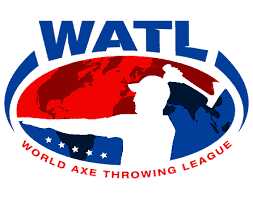
- Axe head weight – up to 2 lbs max.
- Handle can be made of wood, steel or composite fibers (and/or fiberglass).
- Length must be at least 12 inches in the eye of the axehead.
- 4.75 inch maximum blade length.
WATF Big Axe Regulations
The WATF actually doesn’t have any official regulations regarding the use of larger axes. That’s why I recommend the big axes below.
With that in mind, three great axes meet those requirements. If you’re a beginner and just starting out, or looking for an axe to train hard with and unavoidably abuse, you might want to go with a steel or fiberglass-handle axe – Those are more durable than wood-handled axes.
Frequently Asked Questions
How Sharp Should A Throwing Axe Be?
Throwing axes should be sharp enough that you can shave with them. In my experience, you should get your axe as sharp as possible with the equipment you have on hand, whether a sharpening stone, a belt sander, or an angle grinder. A blunt axe is more likely to bounce off the target, which doesn’t count towards your score.
How Heavy Should A Throwing Axe Be?
Most throwing axes are between 1 and 2 pounds, depending on their handle’s material and the axe head’s size. You can get large axes to throw with NATF guidelines have a weight limit of between 2.25 and 2.75 lbs for the axehead alone.
How Long Should A Throwing Axe Be?
Most throwing axes are between 12 and 20 inches depending on the style and handle design. You can get large axes for throwing, which are much more difficult. NATF guidelines for large axe throwing is a minimum of 25 inches long.
Conclusion
Ultimately, it comes down to what axes you feel comfortable handling. Axe throwing should be fun – in the end, you don’t have to participate in official competitions and can do your own thing with whatever axe you like. The main thing is to find out what works best for you and practice to really nail down your throwing technique. By doing that you can impress your friends and awe your competition with how cleanly you bury your axe into the bullseye. If you want to know all about how to throw an axe, check out our in-depth guide on that which goes into detail about throwing techniques, tips and more.
Remember to follow all safety precautions – the last thing you want during your fun axe throwing event is a nasty accident.
